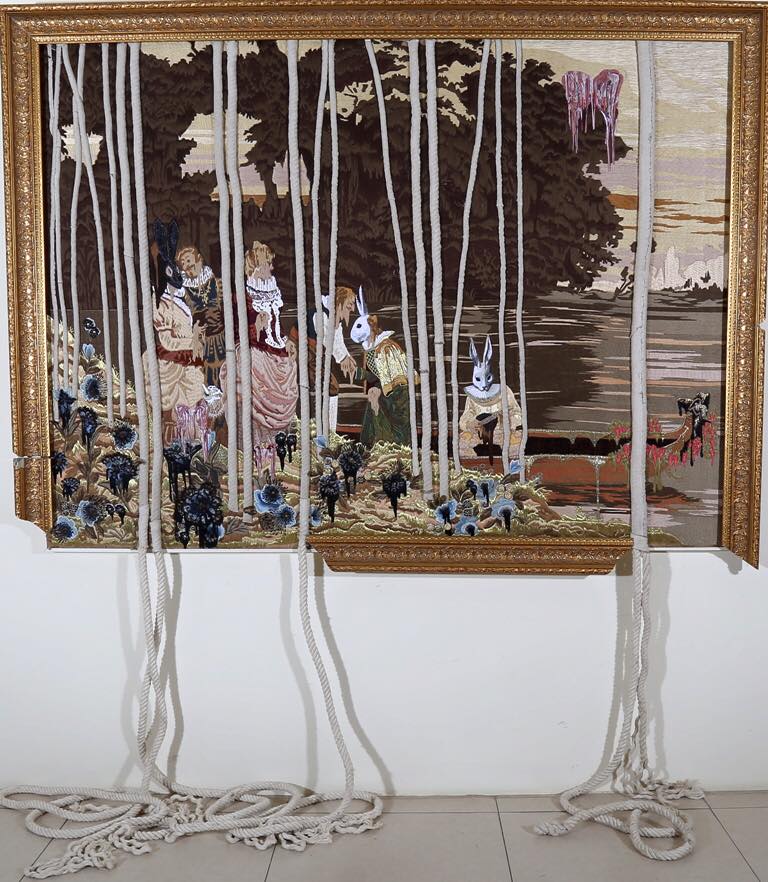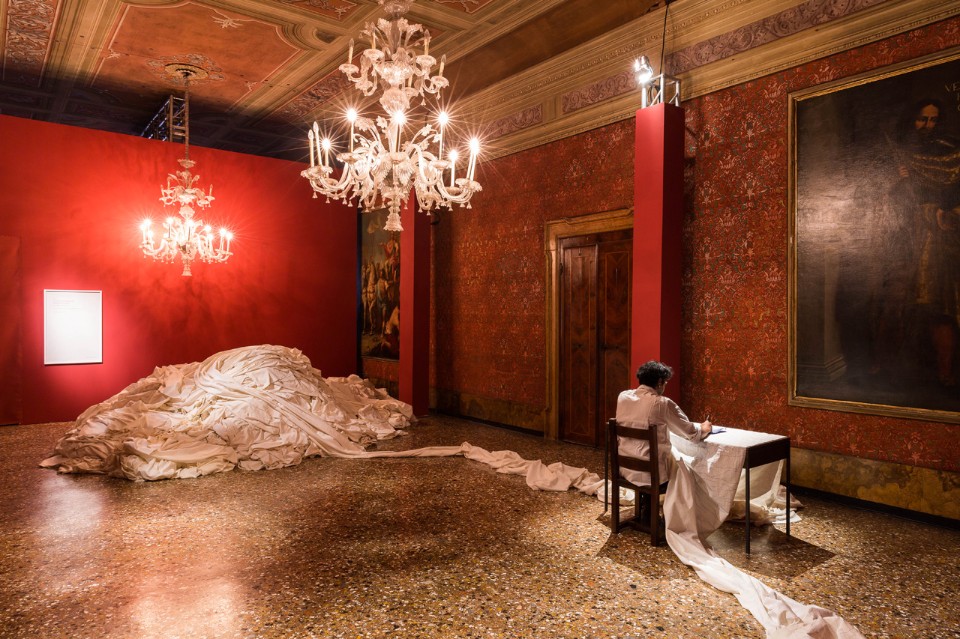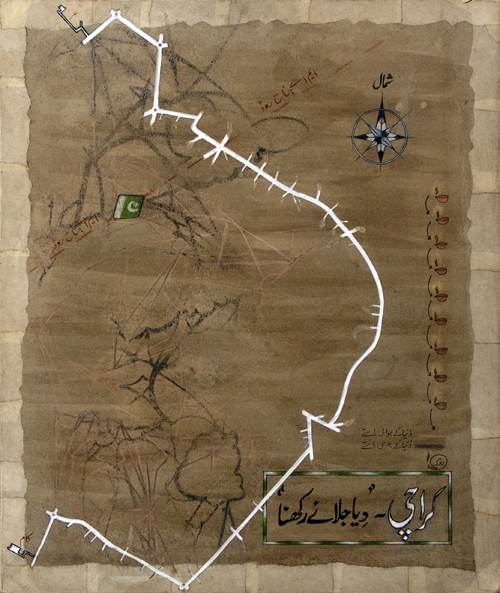Art’s New Frontiers
By Nusrat Khawaja | Art Line | Published 8 years ago
The space for critical dialogue is widening in contemporary art practice in Pakistan. A priori assumptions, with regard to what constitutes the function of art, are conceding to an exploratory spirit. Experience, investigation and public engagement characterise the current zeitgeist. One may say that the fault line of this trajectory calls the nature of the fixed boundary (physical or metaphorical) into question.
The nature of the boundary has been problematic for Pakistanis since the messy creation of independent India and Pakistan. However, the many manifestations of what constitutes a boundary become a useful point of entry for the discussion of contemporary art trends in Pakistan. The boundary serves as an analytical principle according to which multivalent approaches to art practice may be organised for critical appreciation.
Rashid Rana upturned the idea of a political boundary in the 2015 Venice Biennale by sharing a platform with Indian visual artist, Shilpa Gupta. ‘My East is your West’ converted the cartography of conflict into one of collaboration by bringing the two artists under a single rubric.
Venice was the first city to launch the biennale in 1895. Such large-scale art events are indicative of a society’s dynamic engagement with visual culture. They also proclaim a confidence in the public space to be receptive to avant garde concepts. Biennales remove the boundary between the refined exclusivity of the art gallery as elite space as they open spaces for mass engagement with visual culture.
Lahore and Karachi are making a bold initiative into the biennale universe by holding their first events in 2017. The impact of these events on developing critical dialogue cannot be overemphasised, particularly, as Aziz Sohail points out, in the year of Pakistan’s 70th anniversary.
Lahore has appointed Rashid Rana as artistic director of the biennale. The Karachi Biennale Committee has adopted the conceptual title called ‘Witness’ as the umbrella term to project art. They inaugurated the innovative programme called Reel on Hai, which invites artists, designers and architects to creatively transform a hundred wooden cable reels into works of art that will be placed at various locations in Karachi. The cables have been donated by Pakistan Cables. The project kicked off with the first reel painted by the gifted calligraphy artist, Sanki King.
Niilofur Farrukh who is on the Karachi Biennale Committee is enthusiastic about engaging new audiences because of the expansion of the Biennale across eight venues. She sees Performance and Video Art becoming more mainstream and developing within a local context. The Karachi Biennale, she succinctly states, “will allow visitors to see our art in its ecosystem.”
This localisation of art display is a corollary to the success of Pakistani artists such as Rashid Rana, Shazia Sikander, Imran Qureshi, etc. who have shown their work abroad to critical acclaim. The metropolis becomes the epicenter of attention as opposed to the export of local talent.
The shifting of art to the public sphere entails a seismic re-contextualisation of art material that can be presented to a wider audience. The curatorial processes that underlie the selection of art for viewing by a wider demographic are operating under a different set of criteria from those that govern gallery selection. But galleries too are responding to the phenomenon of art as an immersive experience.
Abid Merchant of Sanat Gallery speaks of the need artists and curators feel to go beyond showing art on the walls of a gallery. He underscores their desire to provide audiences with “a complete experience” that can be met by means of installations and performances.
The participatory trend in art loosens traditional boundaries between the producer (artist) and the consumer (audience). The audience takes on an enlarged role as cultural practitioner in order to create new boundaries in their capacity as private individual and citizen. When the exhibition space opens itself up to a public platform, the discursive possibilities of art become unpredictable, exciting, and filled with the potential to renegotiate boundaries. The art horizon in 2017 promises a rich harvest.





